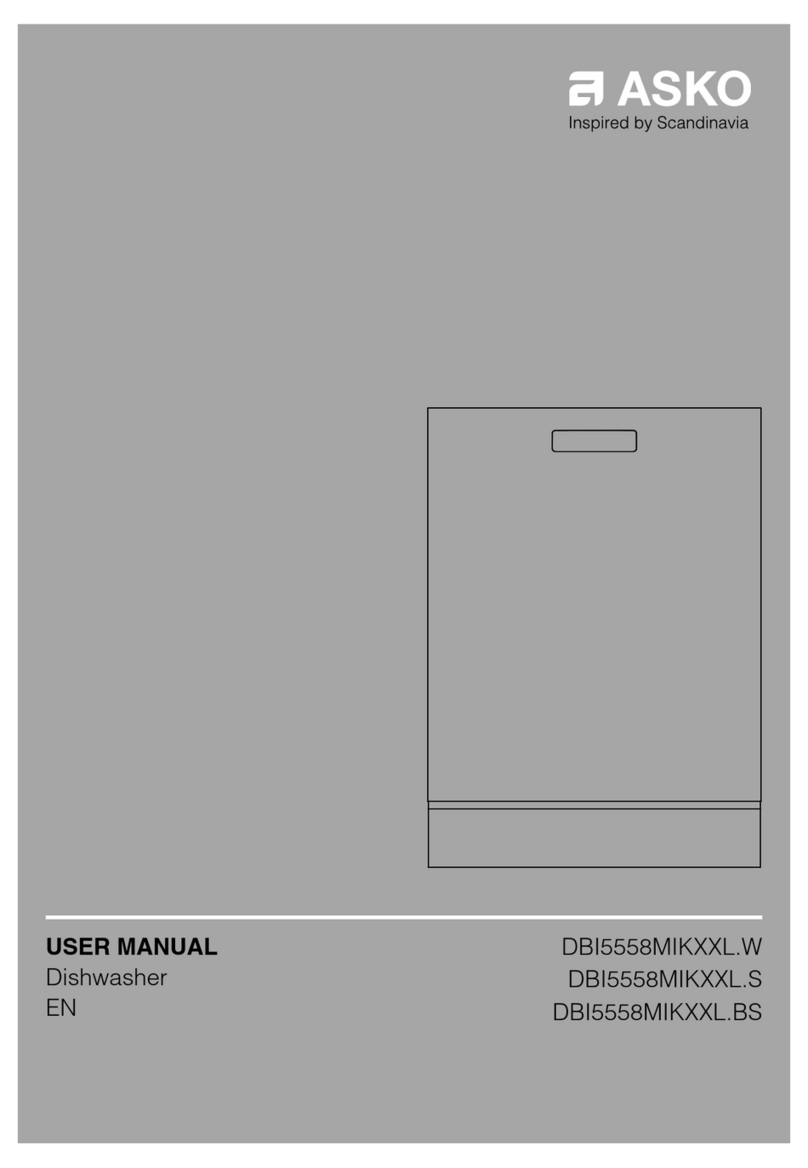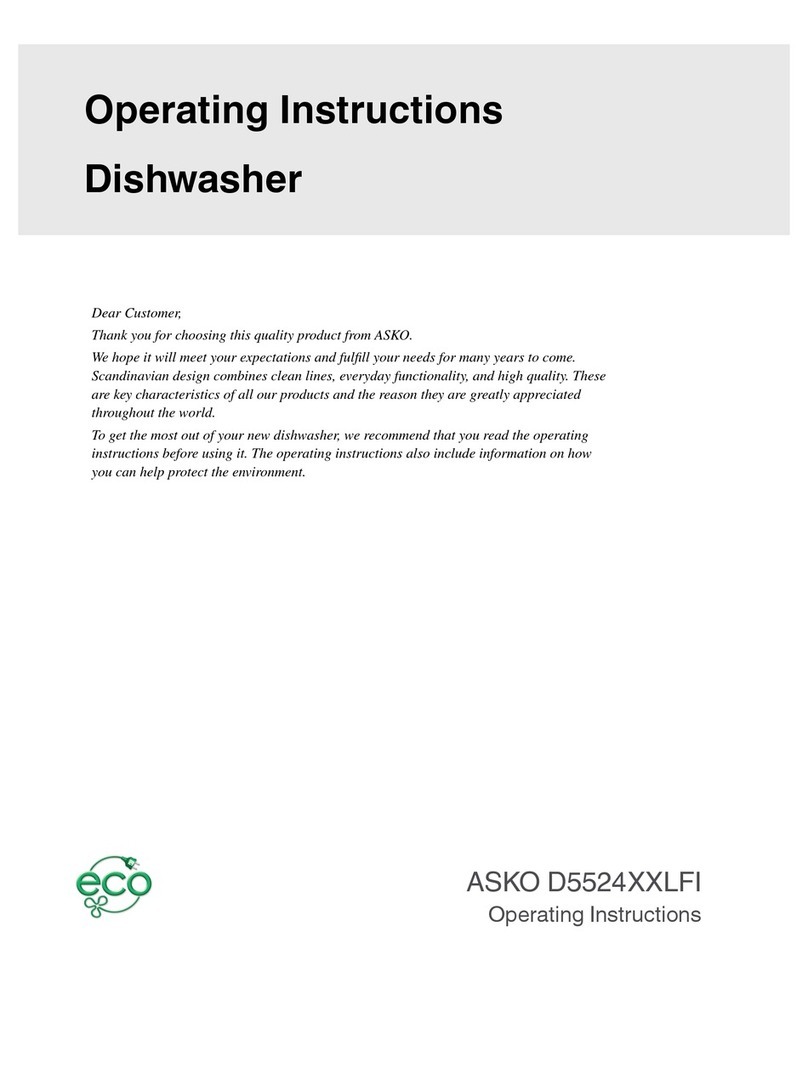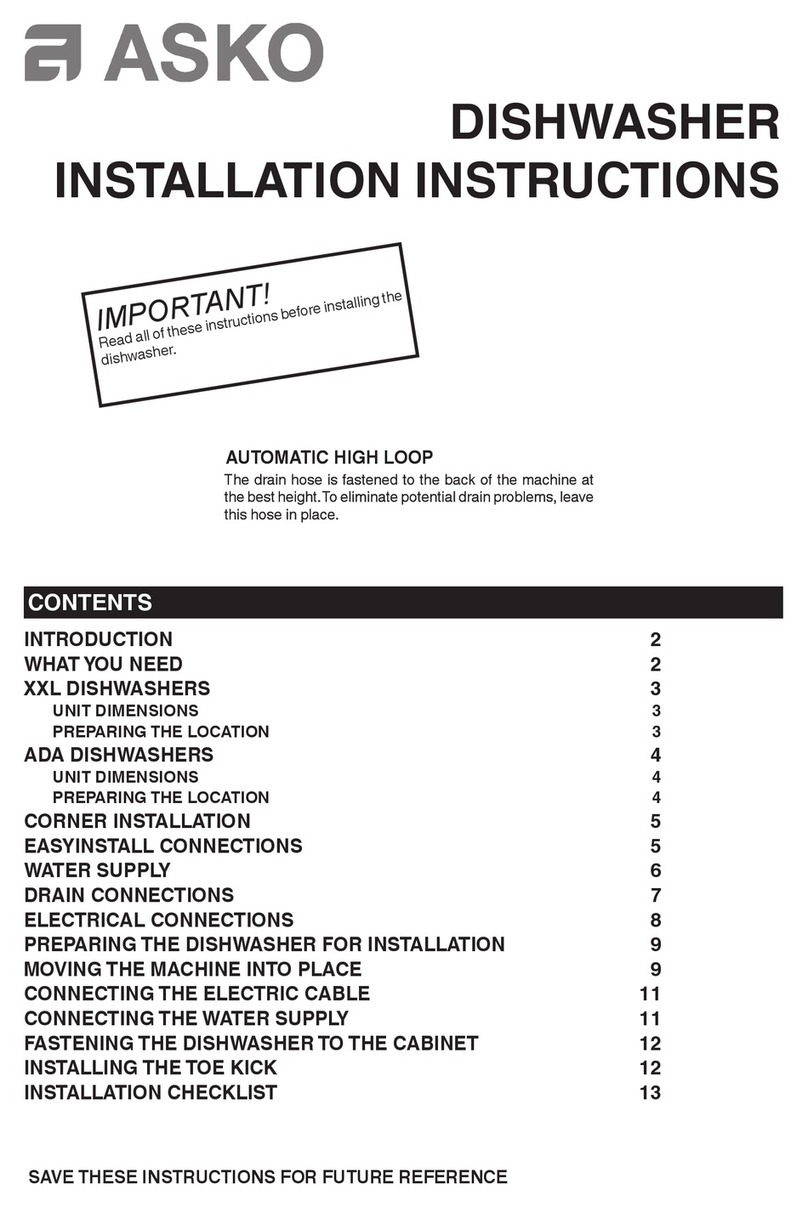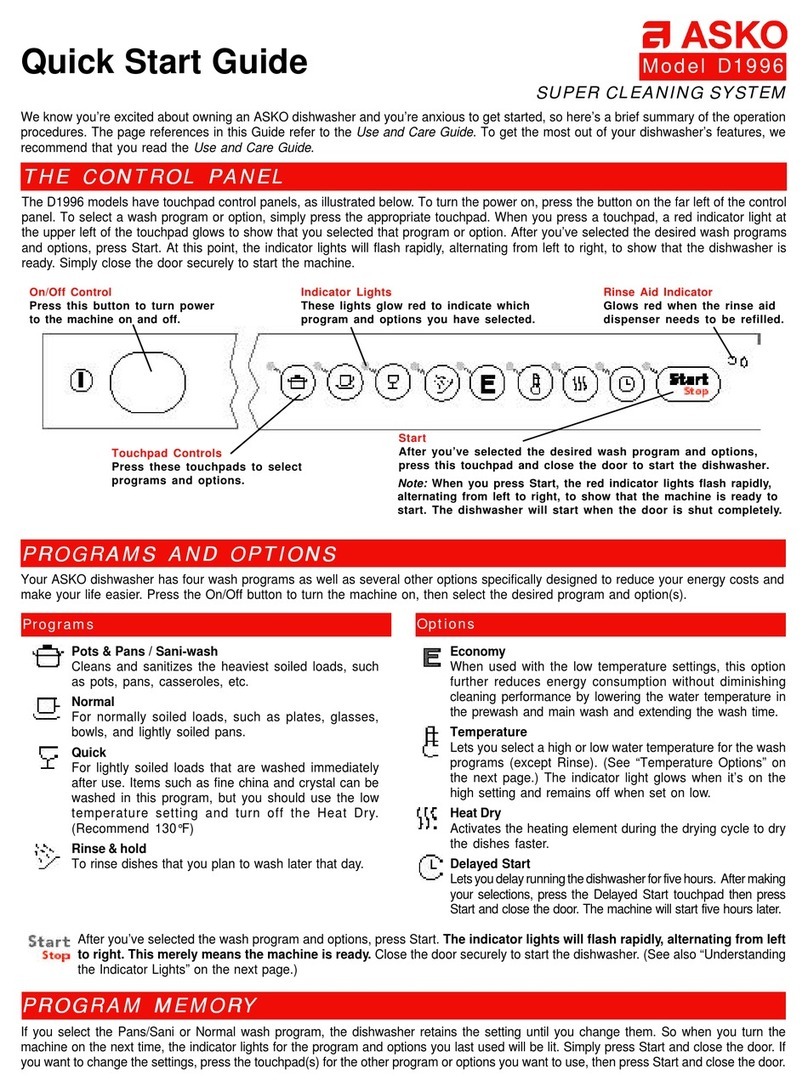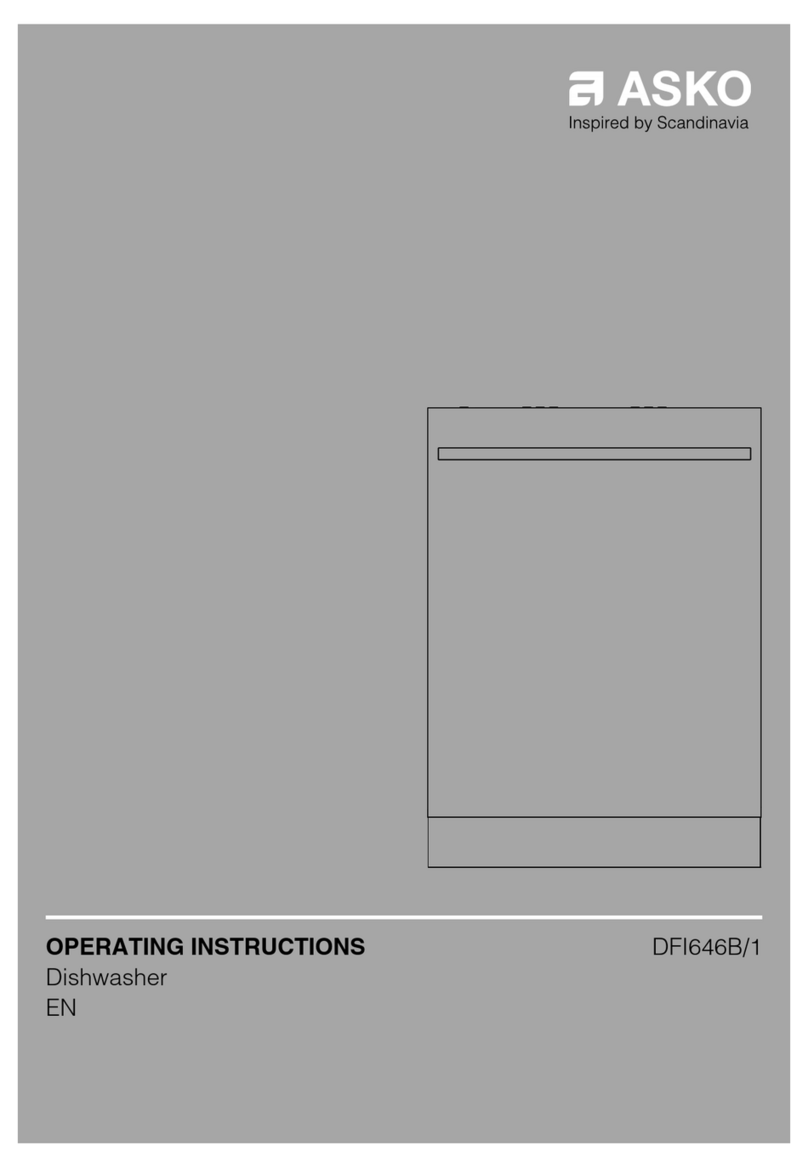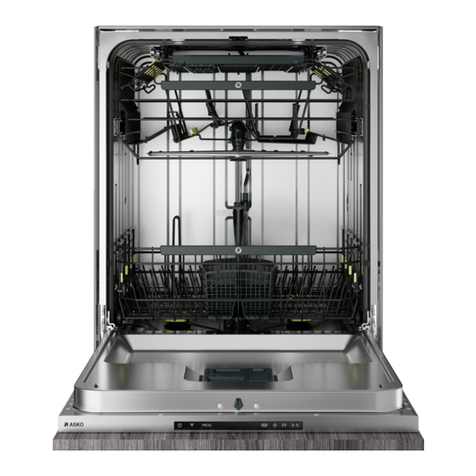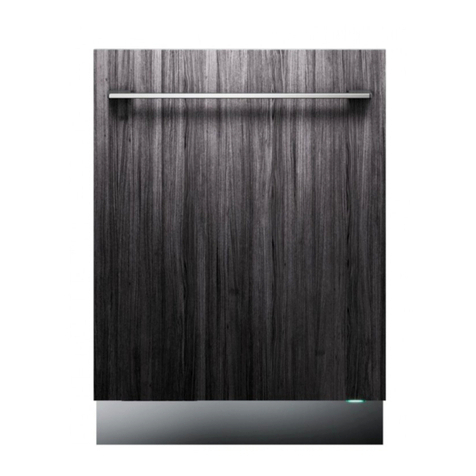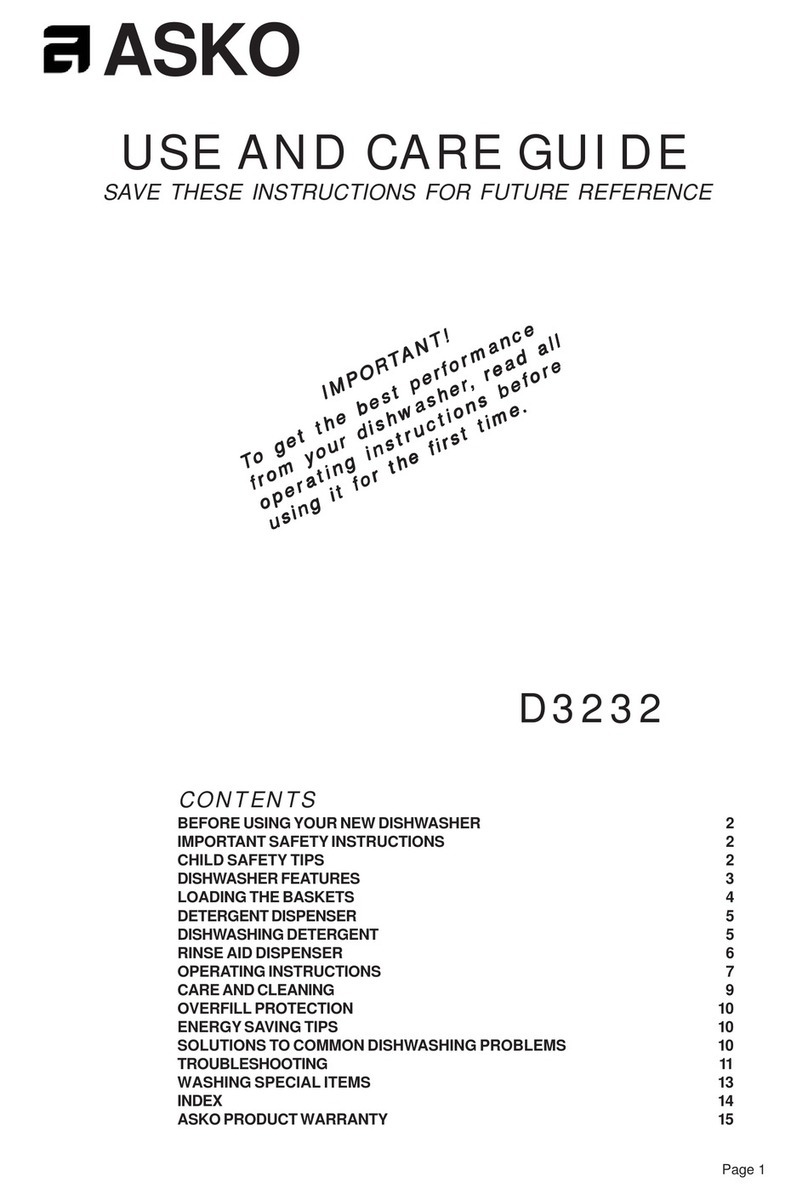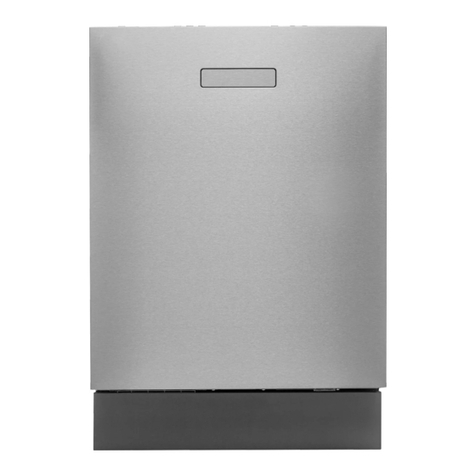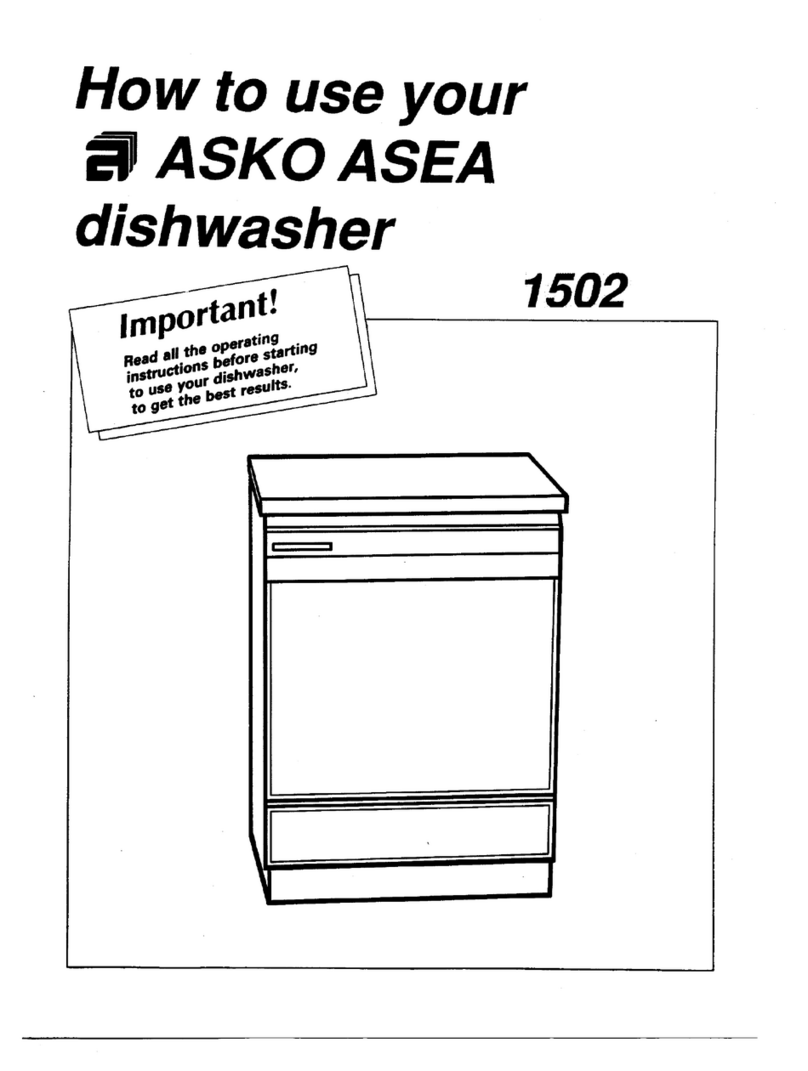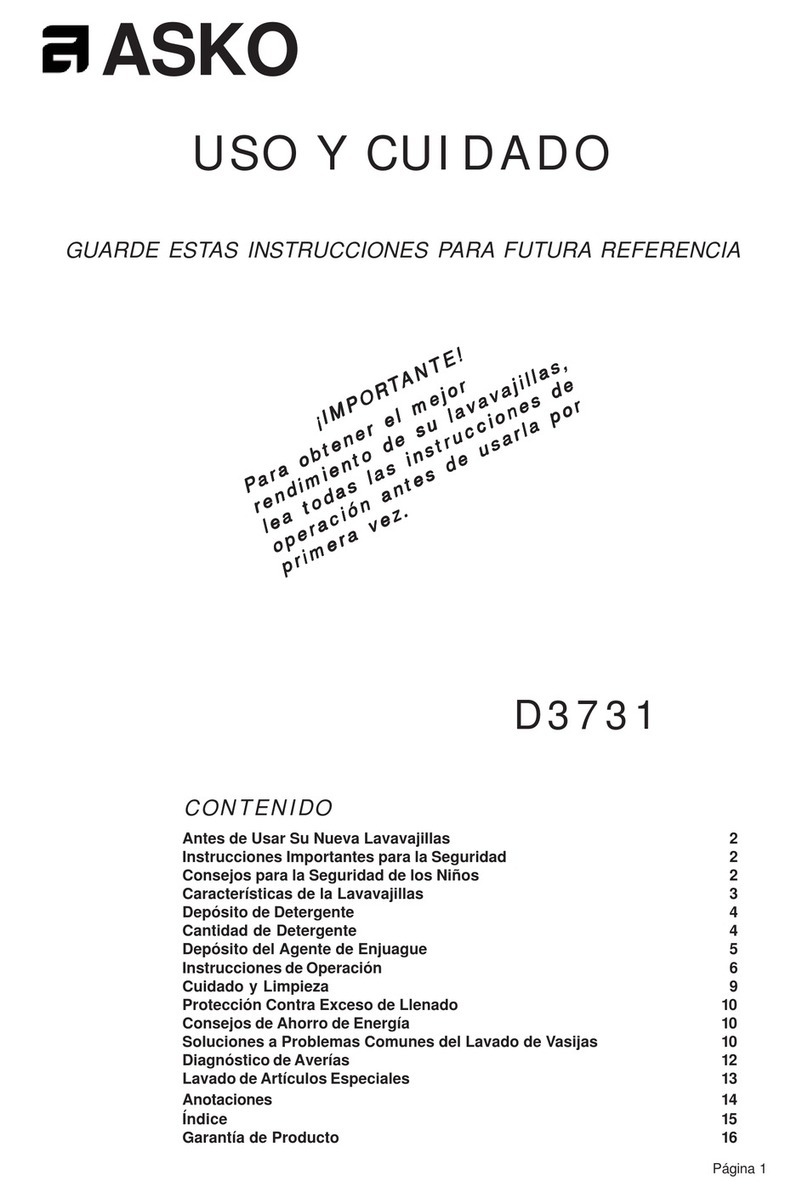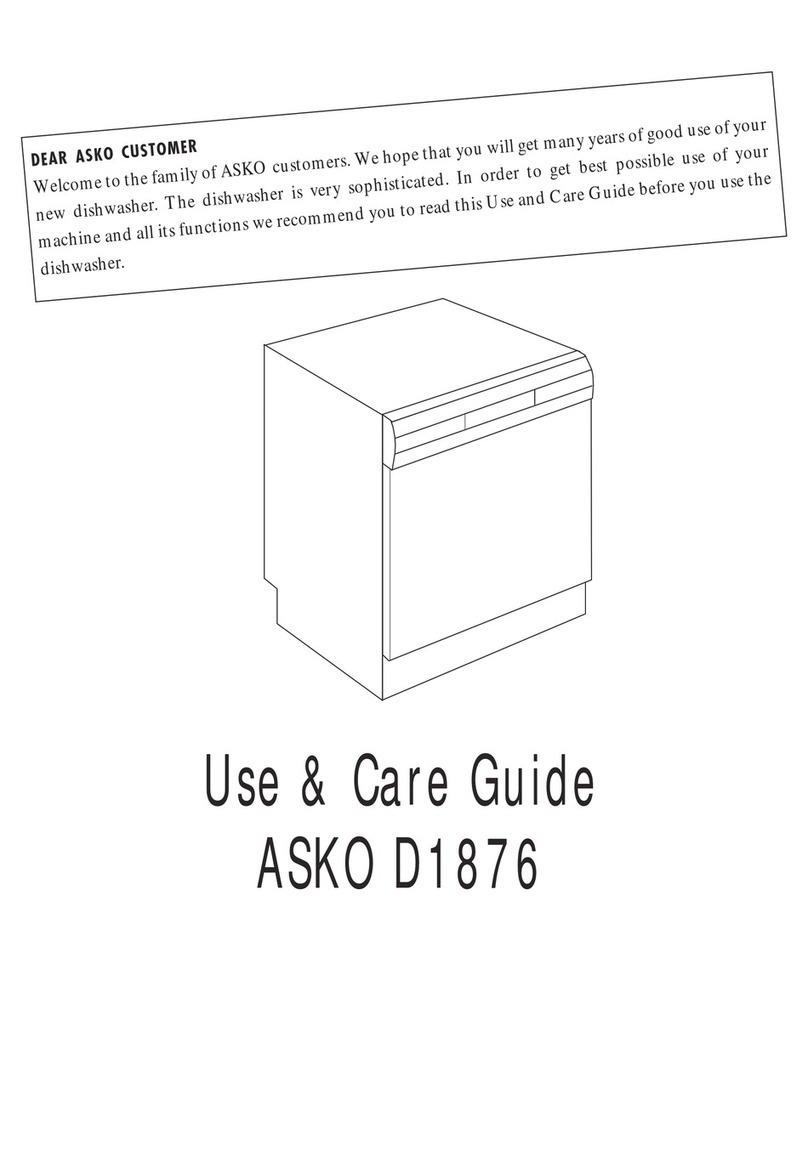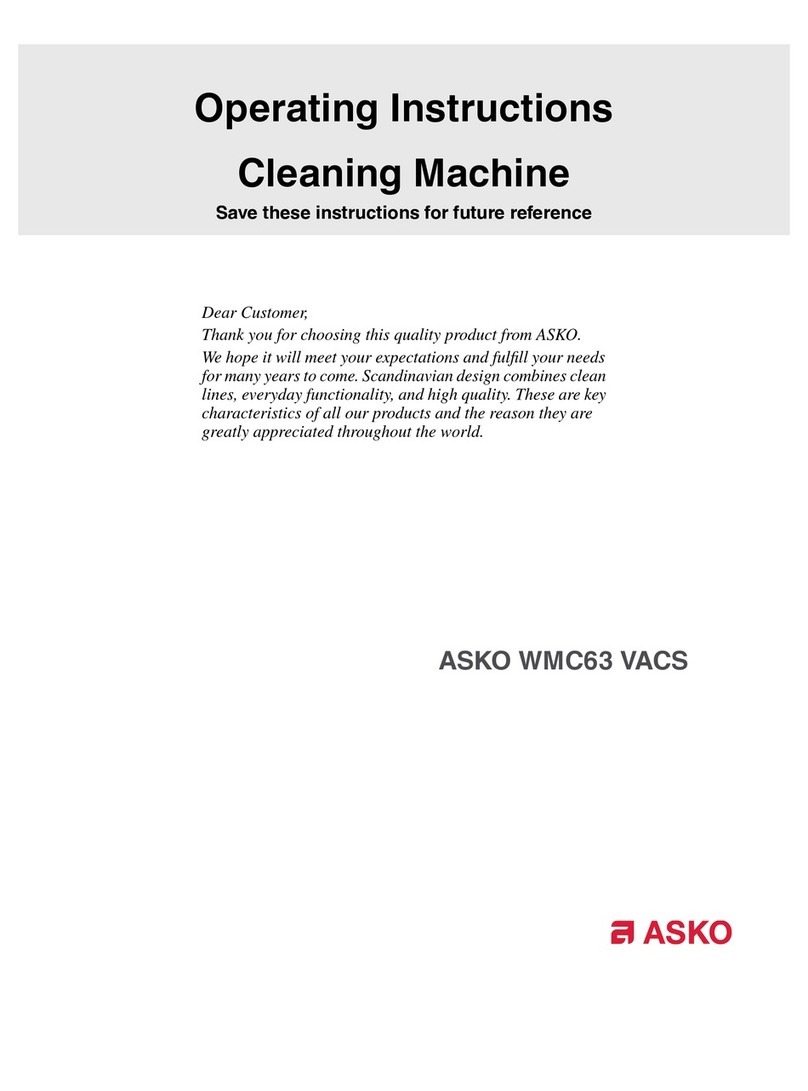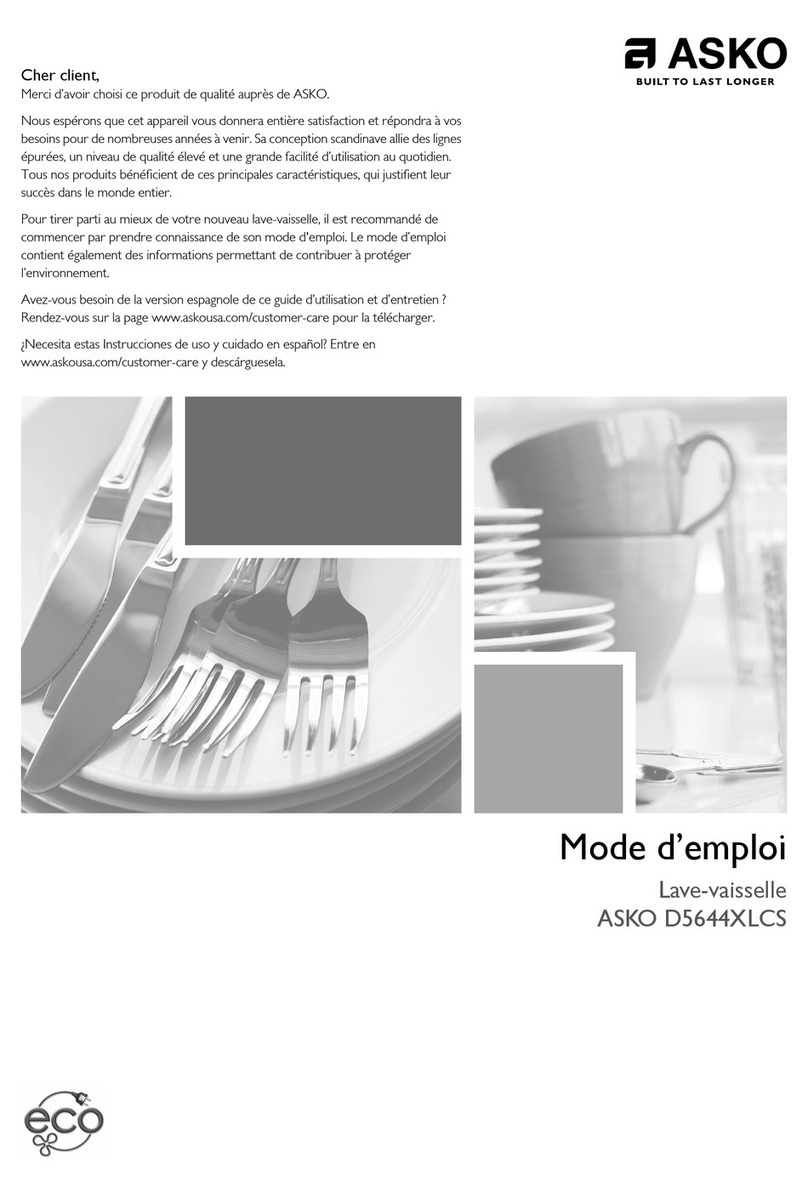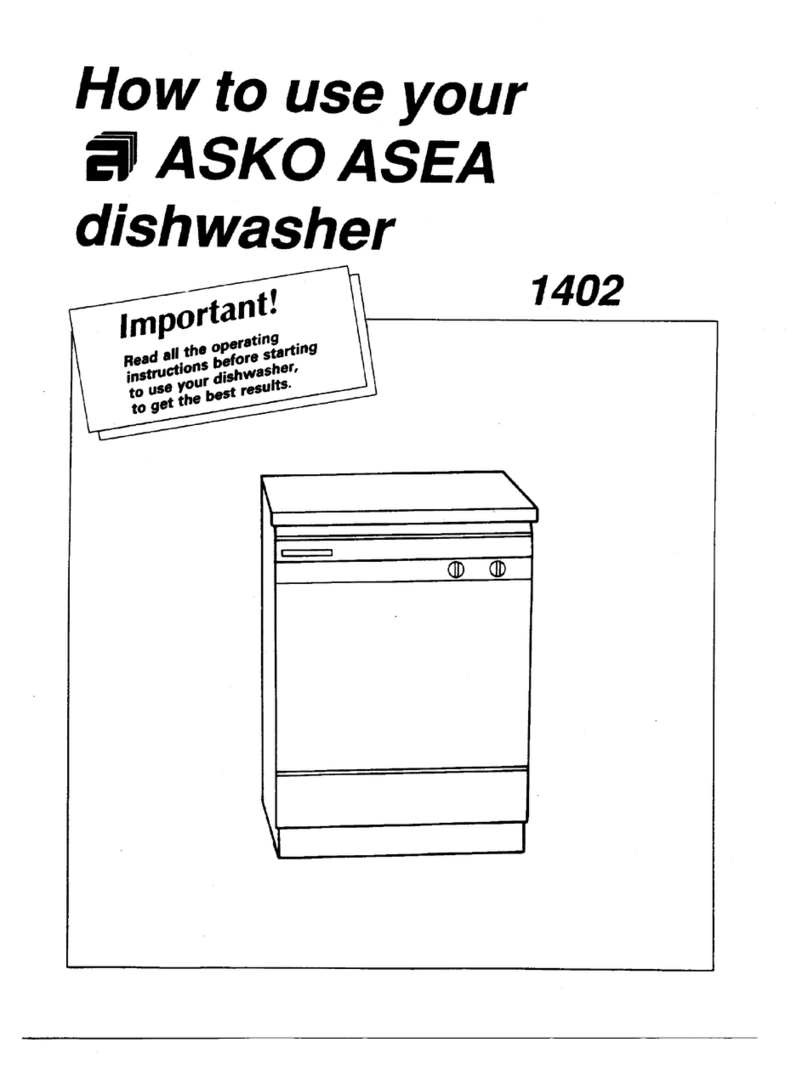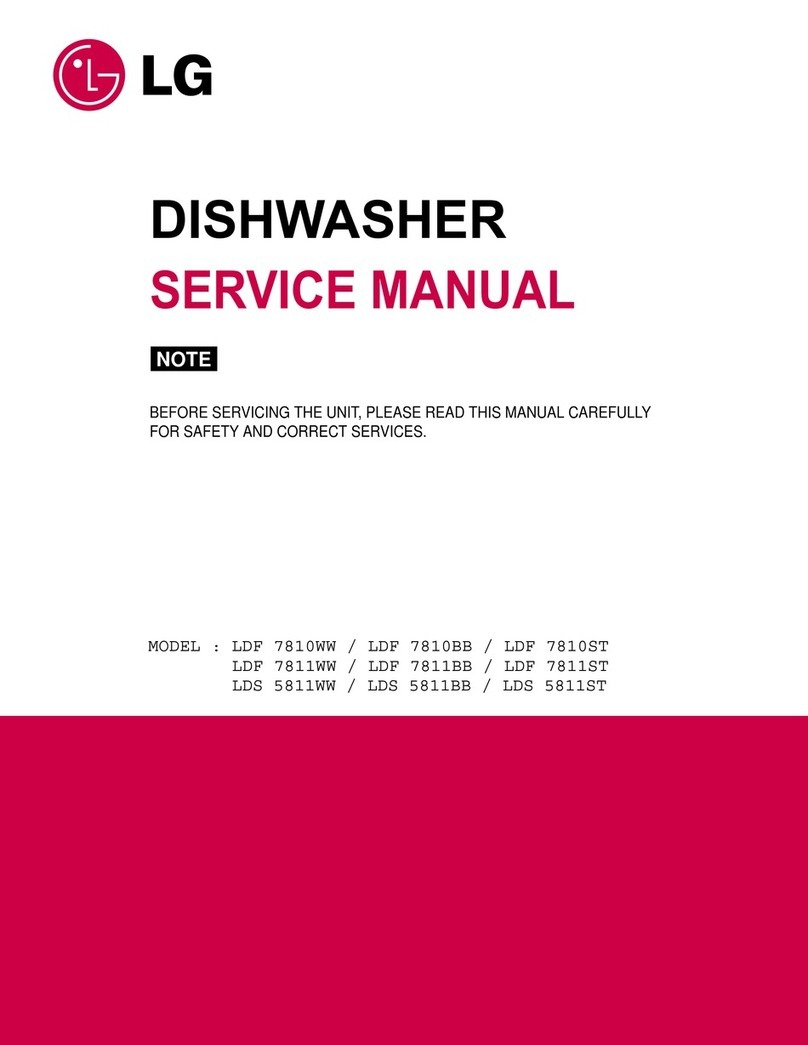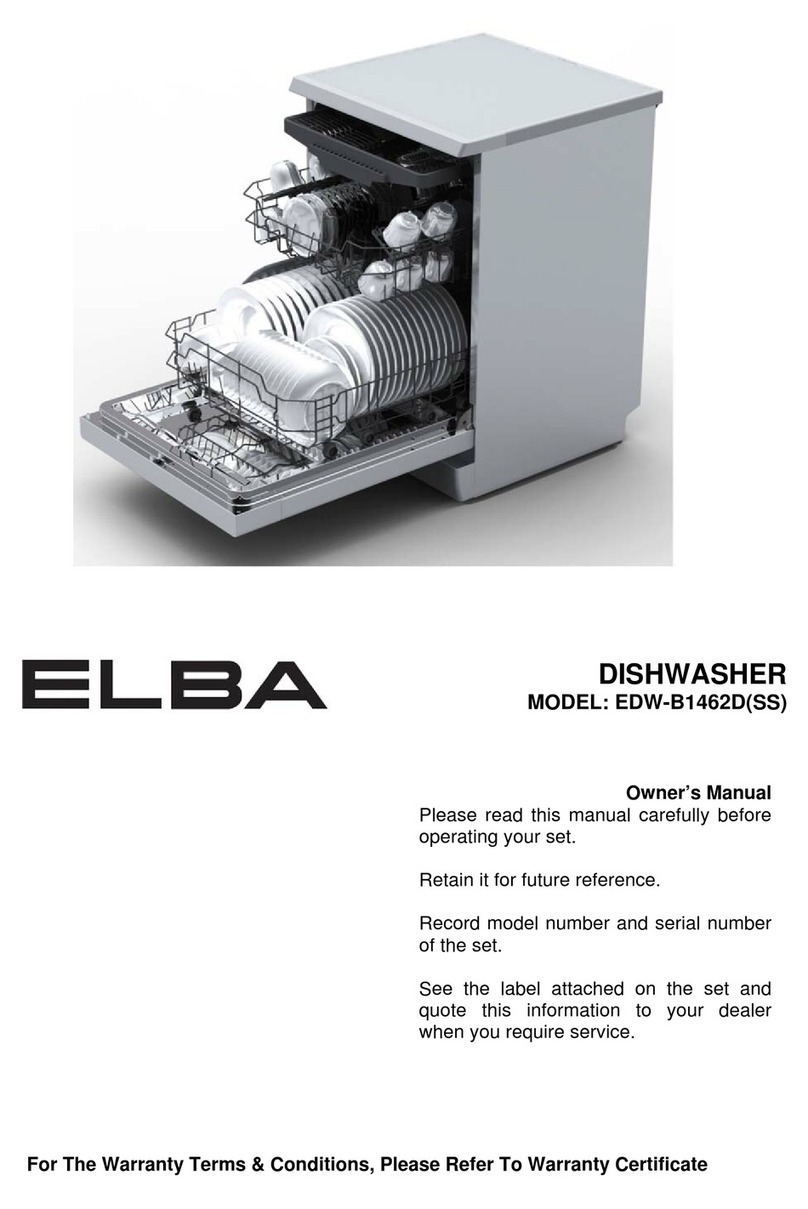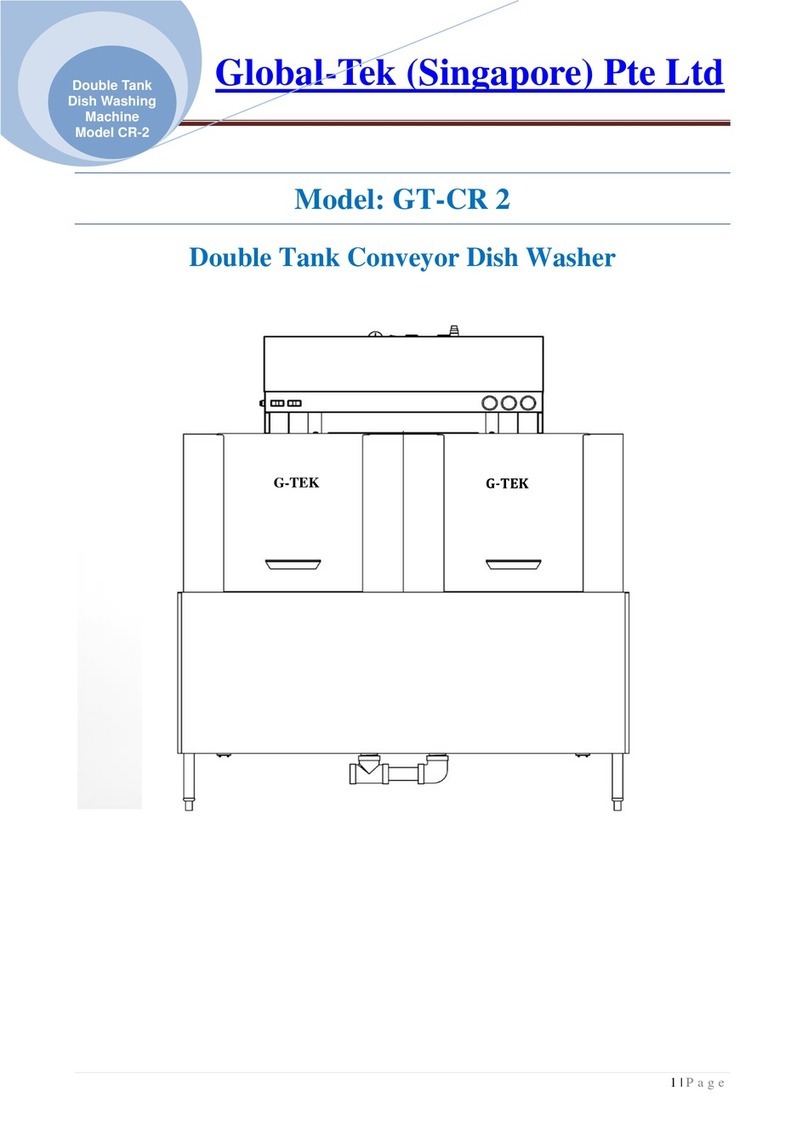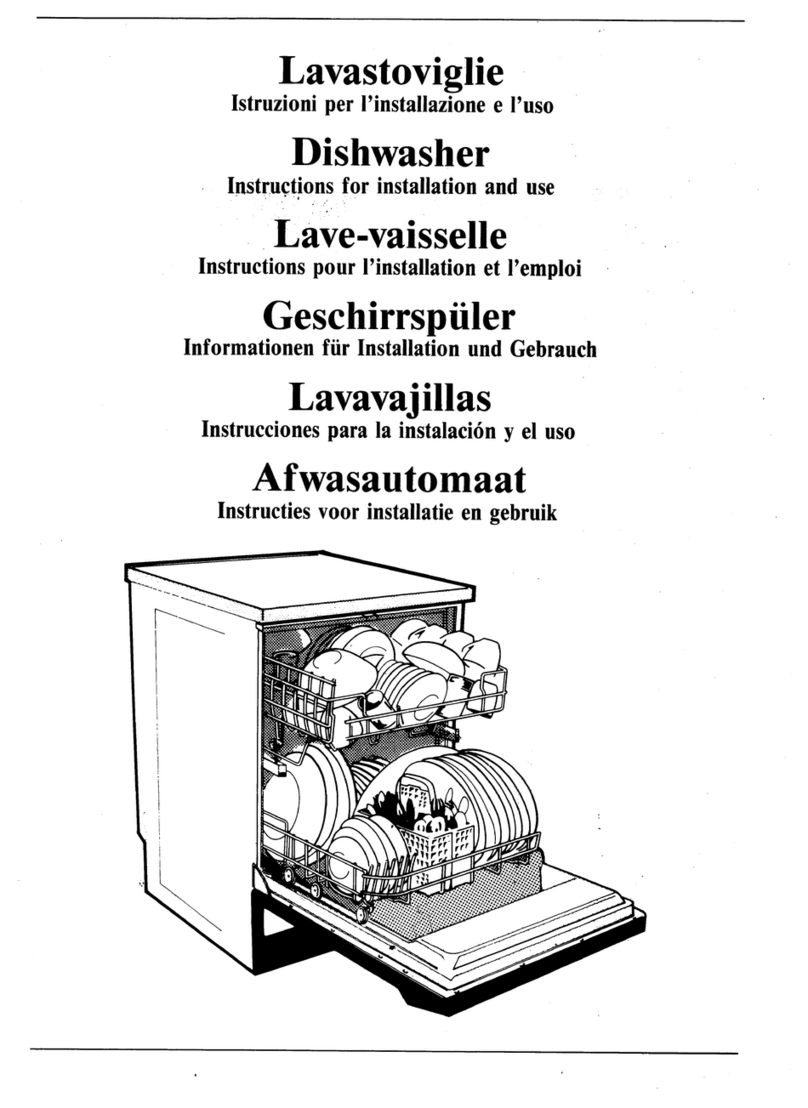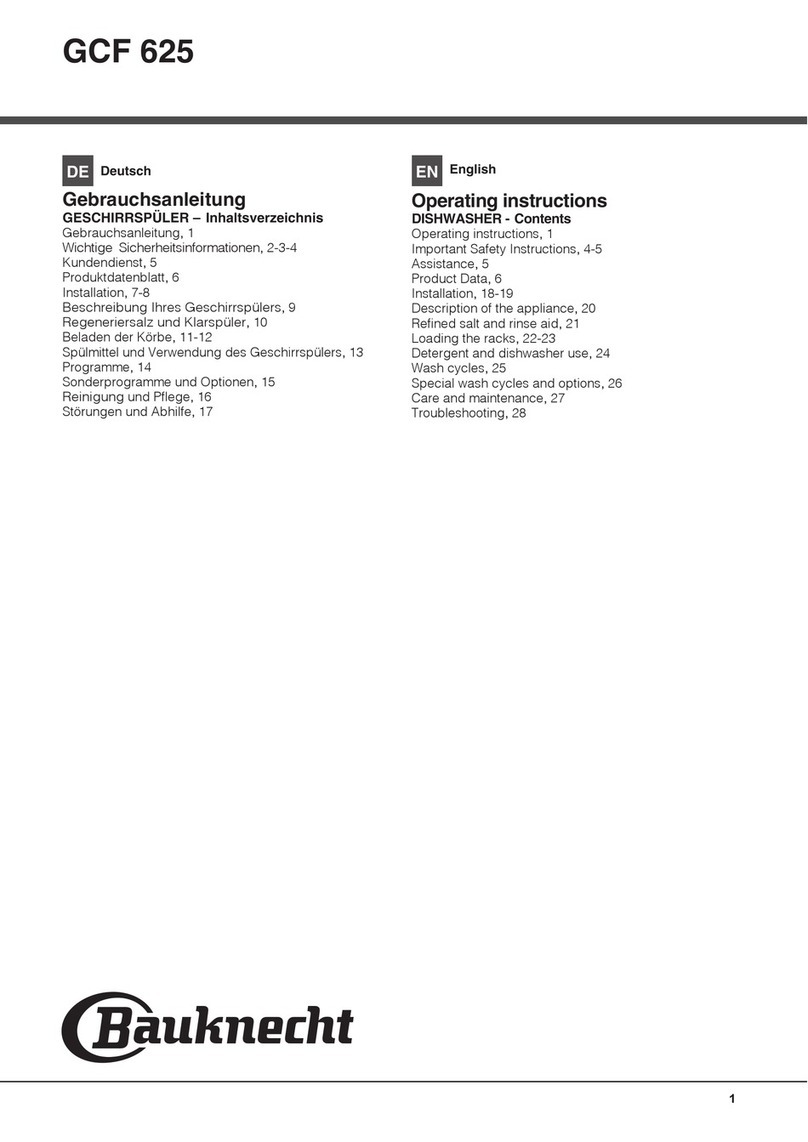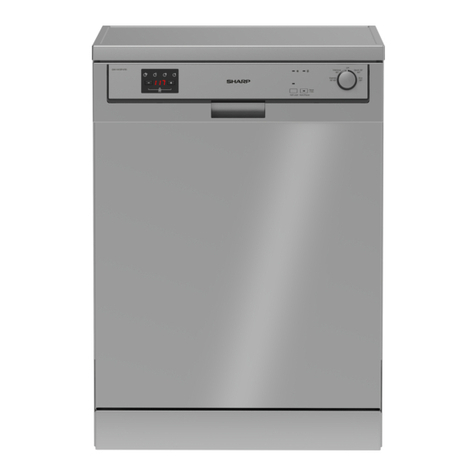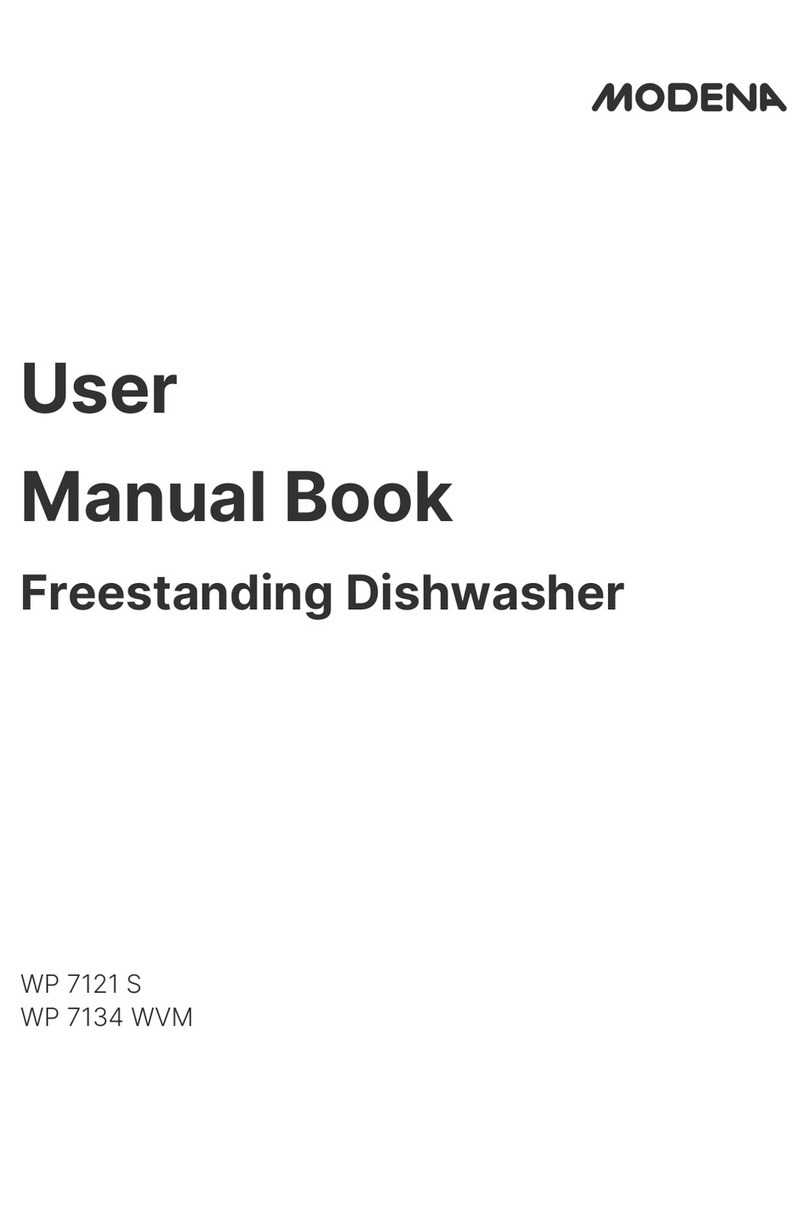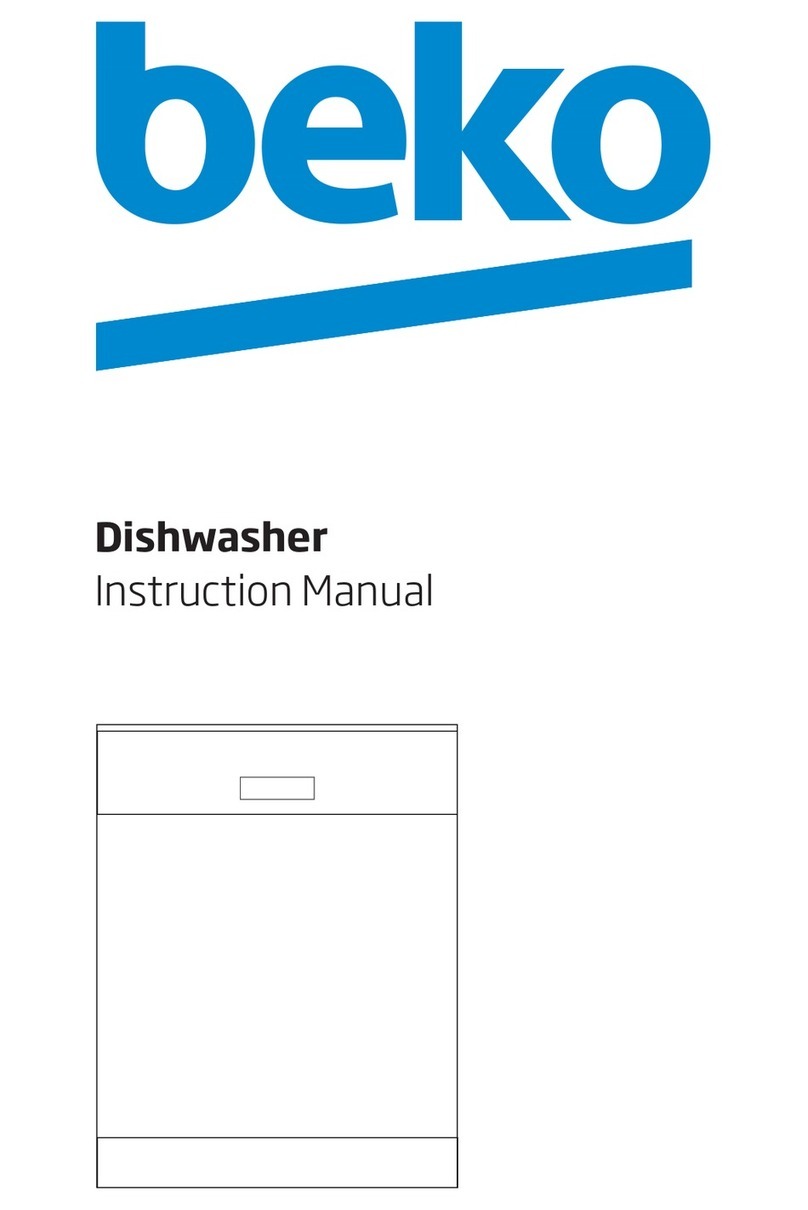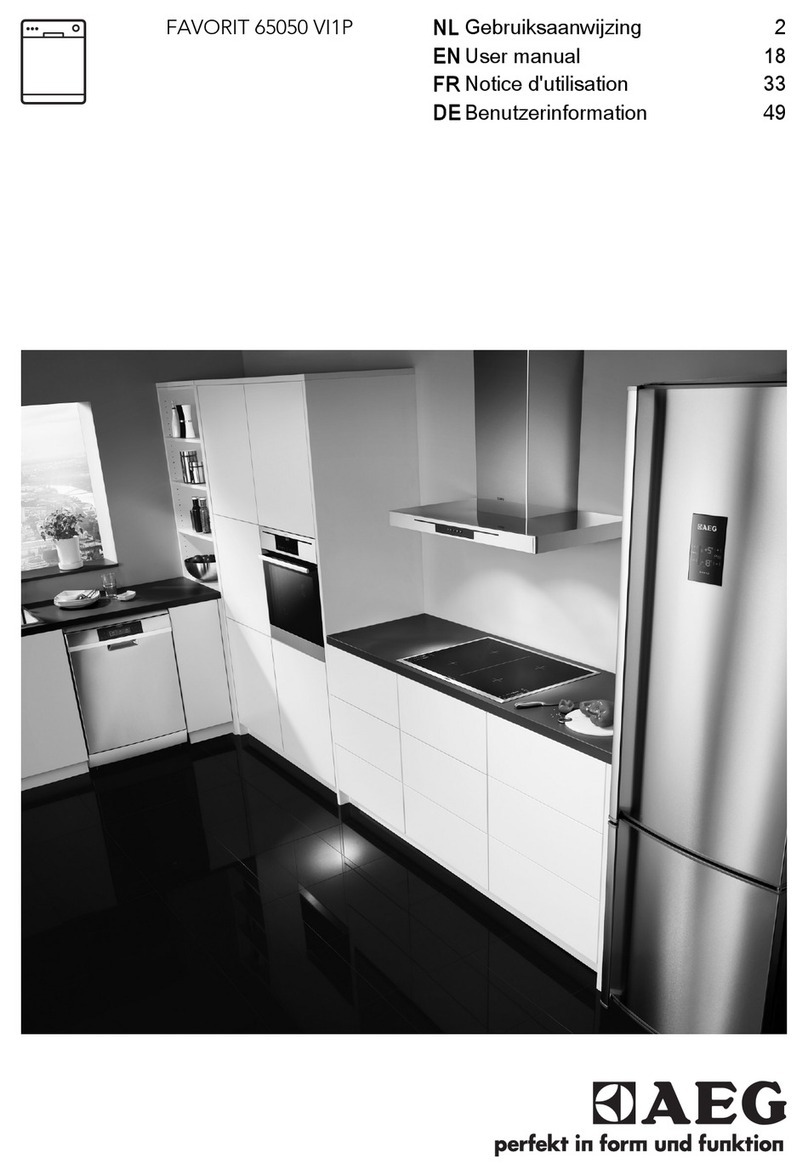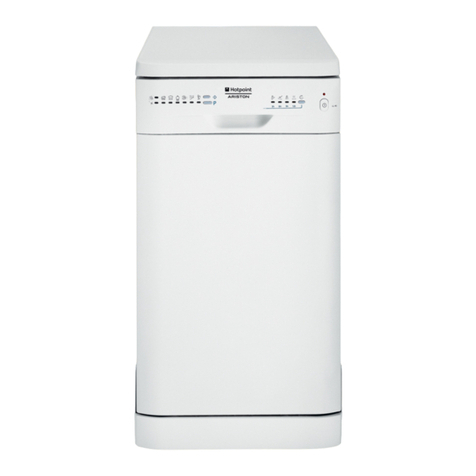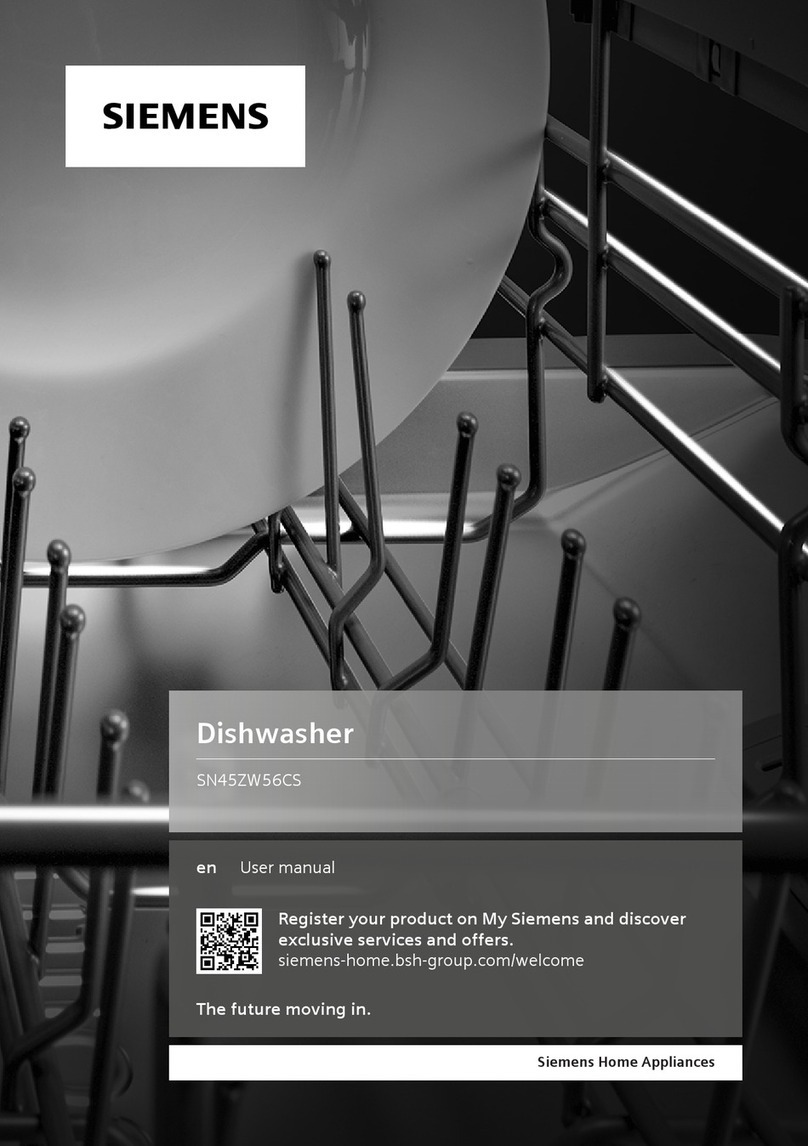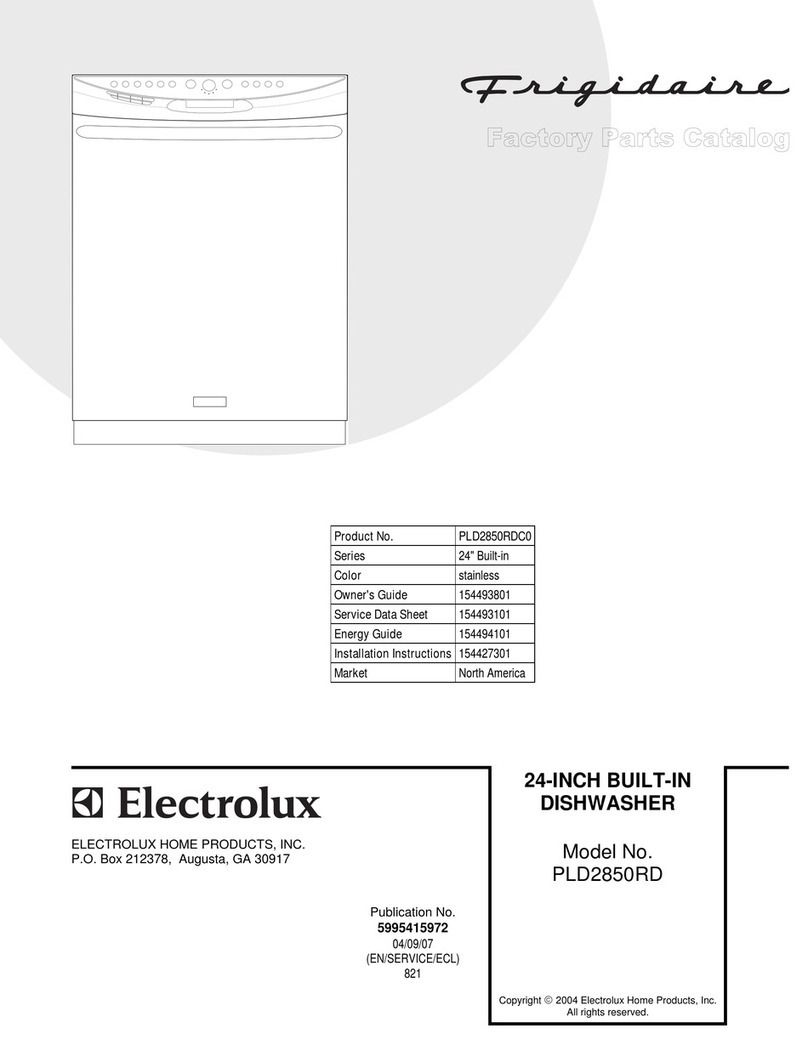Important safety
instructions
SAVE THESE INSTRUCTIONS FOR FUTURE REFERENCE
WARNING!
This manual does not cover all possible conditions and
situations that may occur. Common sense and caution should
always be used when installing, operating, and maintaining
any appliance.
• Read all instructions before using the dishwasher.
• Dishwashers must be electrically grounded. Read the
Installation Instructions for details.
• Use the dishwasher only for its intended purpose.
• Do not run the dishwasher while you are out of the home.
• Use only automatic dishwasher detergents and rinse agents.
• To reduce the risk of injury, keep detergents and rinse aids
out of the reach of children.
• Do not load sharp items near the door; you could damage
the door seal.
• Place sharp knives in the cutlery basket with the sharp ends
down to avoid the risk of cut-type injuries.
• Do not wash plastic items unless they are marked
“dishwasher safe” or the equivalent. For items not marked,
check the manufacturer’s recommendations. Items not
dishwasher safe could become deformed or melt and create
a potential fire hazard.
• Do not operate the dishwasher unless all enclosure panels
are properly in place (i.e., guard plate, access panel, toe
kick, etc.).
• Do not tamper with controls by removing or changing.
• Do not abuse, sit on, or stand on the dishwasher door or
baskets.
• To reduce the risk of injury, do not allow children to play in
or on a dishwasher.
• Under certain conditions, hydrogen gas may be produced
in a hot water system that has not been used for two weeks
or more. HYDROGEN GAS IS EXPLOSIVE. If the hot water
system has not been used for two weeks, before using the
dishwasher turn on all hot water faucets and let the water
flow from each for several minutes. This will release any
accumulated hydrogen gas. As the gas is flammable, do
not smoke or use an open flame during this time.
• When removing an old dishwasher from service or
discarding it, remove the door to the washing compartment.
• Do not store or use combustible materials, gasoline, or other
flammable vapors and liquids in the vicinity of this or any
other appliance.
• Disconnect electrical power to dishwasher before servicing.
• Repairs should be done by a qualified technician.
• Read the grounding instructions in the installation
instructions.
Child safety
TIP!
Dishwasher detergents and rinse aids are corrosive, so always
keep them out of reach of children.
• Should a child swallow dishwasher detergent or rinse aid,
give plenty to drink immediately, i.e., one or two glasses of
milk or water. Do not try to induce vomiting. Seek medical
advice immediately: Call the National Capital Poison Center
at 1-800-222-1222.
• Always close the door and start the dishwasher as soon as
you put in the detergent.
• Always keep small children away from the machine when it is
open. There may be some detergent residue left inside the
machine.
• If dishwasher detergent gets in someone’s eyes, rinse them
with plenty of water for at least 15 minutes.
• Do not allow children to use or play in or on the dishwasher.
• Load sharp objects with the pointed end facing the back of
the dishwasher. Sharp items loaded in the cutlery basket
should be loaded with pointed ends down.
Activate child lock (Kid Safe™)
You can activate the child lock (button lock) to prevent children
from starting the dishwasher (see the section Settings).
Winter storage/Transport
• Store the dishwasher where the temperature remains above
freezing.
• Avoid long transport distances in very cold weather.
• Transport the dishwasher upright or laying on its back.
Overflow guard function
The overflow protection starts pumping out the machine and turns
off the water supply if the water level in the dishwasher exceeds
the normal level. If the overflow protection is triggered, turn off
the water supply and call the Customer Care Center.
Care and maintenance instructions
When cleaning the edge around the door, use only a slightly
damp cloth. Do not spray water around the edge! Moisture can
make its way into the lock, which contains electrical components.
Packing material
Please sort waste materials in accordance with local guidelines.
Disposal
• When the machine has reached the end of its service life and
is to be disposed of, it should immediately be made unusable.
Pull out the power cable and cut it as short as possible.
• The dishwasher is manufactured and labeled for recycling.
• Contact your municipality for information about where and
how your dishwasher can be recycled correctly.
Customer Care Center 1-800-898-1879
www.askona.com 3
